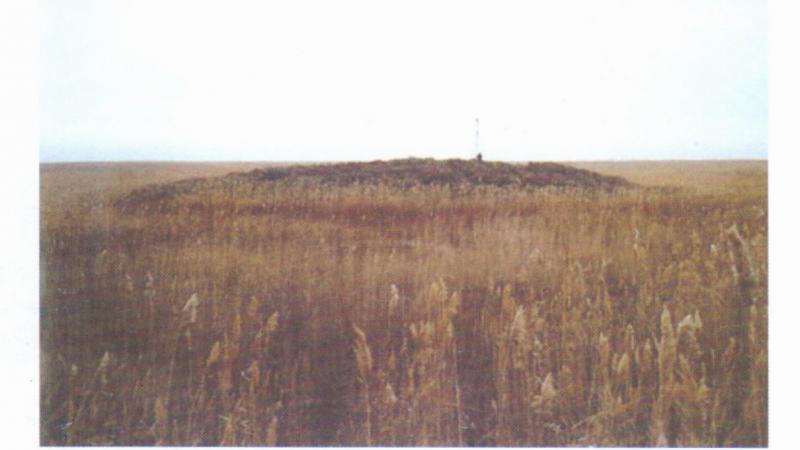Research in the Aktobe region

The Institute of History, Archeology and Ethnography of the Academy of Sciences of the Kazakh SSR and the Aktobe Regional Museum of Local Lore carried out work on four sites. The Andronovo burial ground was excavated at the Peschanyi (2 km east of Aktyubinsk) site, the Syn-Tas and Besoba Sarmatian burial mounds on the left bank of the Ilek River near the “Khlebodarov” state farm, and mounds with stone ridges (“mustache”) on the western slopes of the Katyn-Adyr ridge, 21 km east of the village of Donskoye. The Andronovo burial ground was located on a dune formed by two old channels of the Ilek and Zhaksy-Kargaly rivers. Over 60 ceramic vessels were found in the unearthed area (640 sq. m), and the remains of ten Andronovo burials (adults and children) were found. All of them are performed on their side, in a crouched position, with their heads to the west and south. Among ceramics, undecorated jarware with shoulder ledges and grooves predominates. Several large vessels have alloyed profiling and incised or stamped geometric ornament. The finds are bronze beads, a knife, temporal rings, and bracelets. The complex of finds from the Peschanyi has many analogies with the Tasty-Butak burial ground.
In addition to the Andronovo finds, a collection of knife-shaped blades, prismatic cores made of jasper, opal, flint and chalcedony has been collected on the dune. In the southern part of the dune, a Sarmatian burial was excavated. The clothes of the buried person were decorated with bronze bells (25), paste and stone beads.
In the Syn-Tas and Besoba burial grounds, six large Sarmatian kurgans were unearthed. The burial of a military leader in mound 1 on Syn-Tas was particularly interesting, who was buried surrounded by three soldiers in full combat attire. Next to the warriors lay quivers with bronze three-bladed socketed arrows, iron acinaces with butterfly-shaped crosshairs and claw-shaped tops were preserved on the belts, and iron bits with two-hole cheek-pieces and bronze bridle ornaments were preserved in the legs.
Noteworthy is an extensive series of works of applied art from the Syn-Tas burial ground. Massive bronze belt plaques with a scene of a goat being tormented by a griffin were found here, similar to the plaques from the Novo-Kumak burial ground; bridle threads, decorated with a griffin. Ritual spoons with handles in the zoomorphic style stand out in the collection of bone products. On both sides of the wide handle of one spoon, figures of a lying wolf with its head turned back, an eagle head is skillfully carved. On the other two cuttings, there are figures of goats and the head of a predator.
Vessels with a tubular spout-spout, typical of the 5th-4th centuries BC, were found in the barrows of the Besoba burial ground bronze mirrors with a long handle, whetstones with a hole for hanging, a rectangular stone altar on two legs, iron acinaces, bronze three-pronged socketed arrowheads.
A rich burial of a priestess ‹; a massive round altar on three sculptural legs, decorated in the form of heads of a predator. The six-meter burial ground, deepened into the ground by 0.5 m, was protected from above by a wooden covering in the form of a tent and a meter-long layer of earth embankment.
The burial was made on the back, with the head to the southwest. Among the finds represented by earthenware vessels, a flat round bronze mirror, and a grindstone, a group of gold jewelry items stand out:
- Two large hollow earrings, the conical body of which is framed with a belt of granulation.
- 95 hemispherical sewn-on plaques.
- A necklace made of hollow tubes, beads decorated with beading and round cells, and a carnelian pendant with a gold setting, also with beading.
Excavations of a group of mounds "with a mustache" near the village of Donskoy made it possible, as a first approximation, to outline the western contact zone of the Sauromatian and Tasmola tribes, passing in the region of the Katyn-Adyr ridge.

